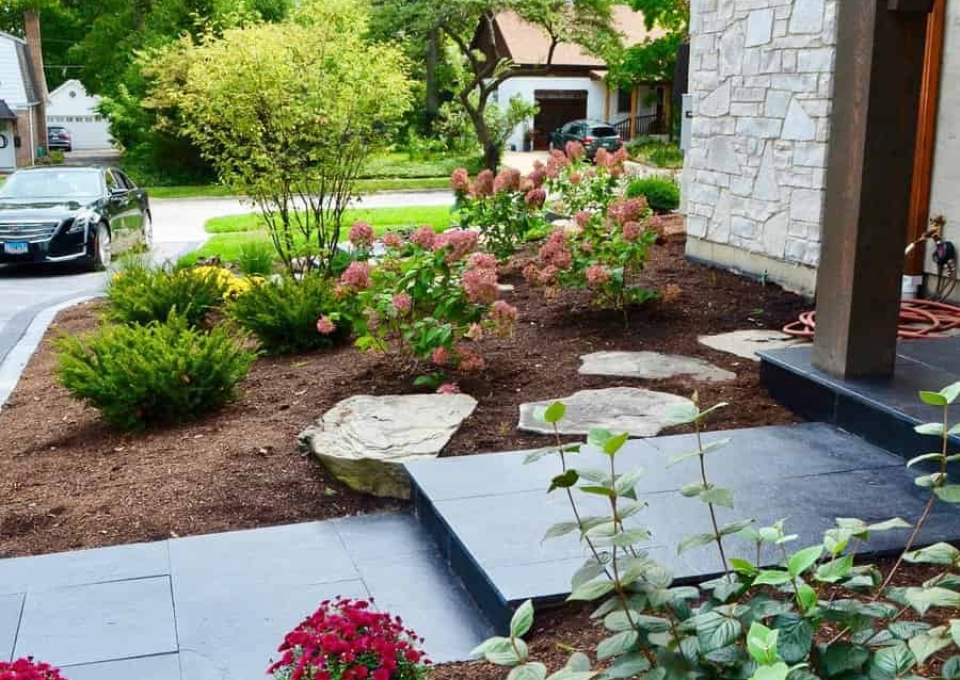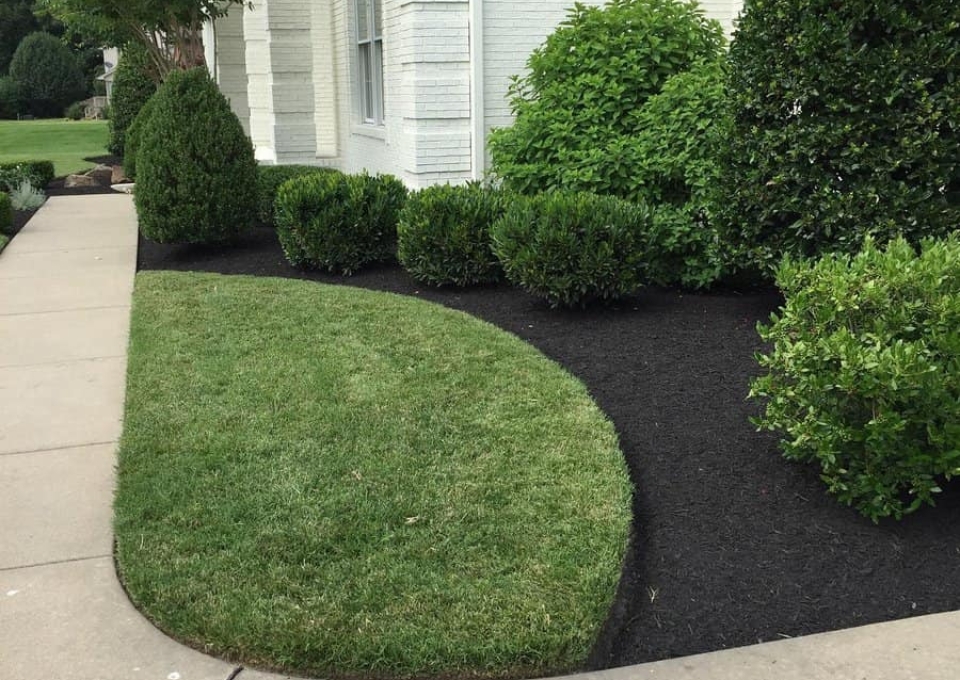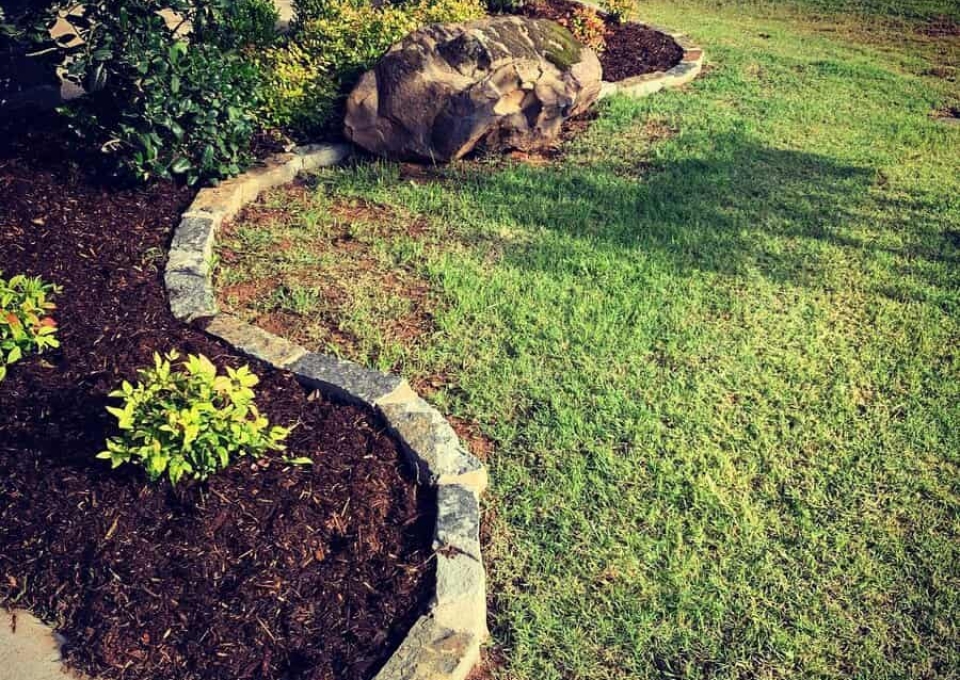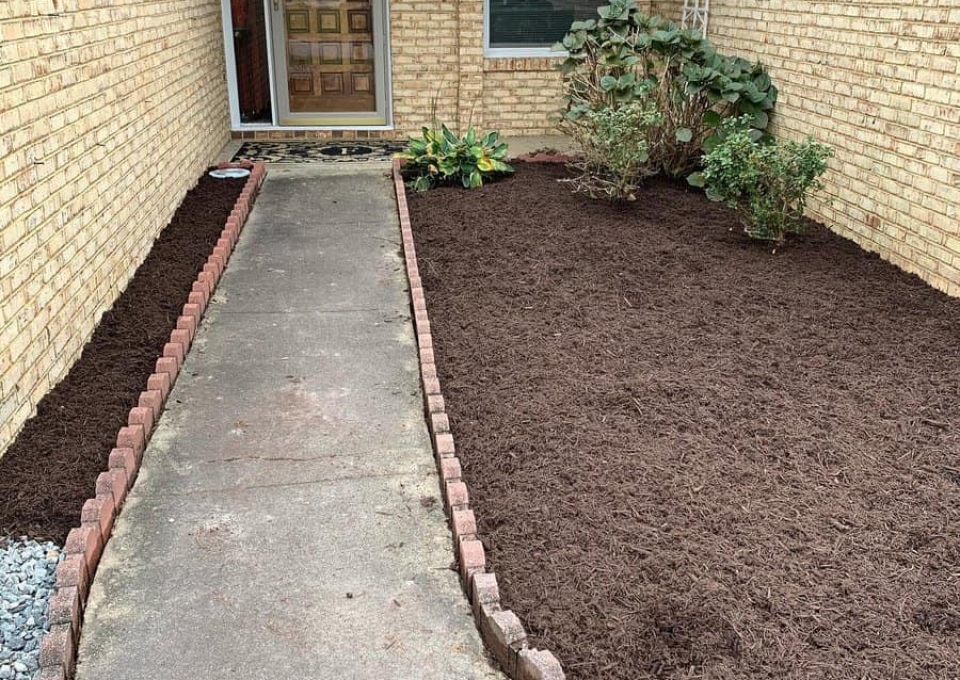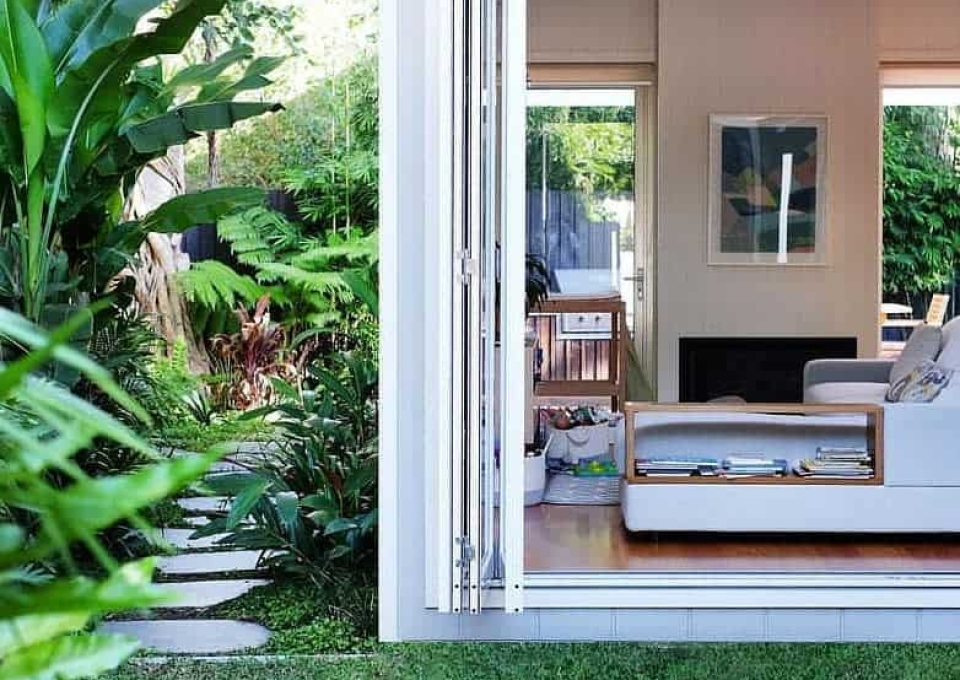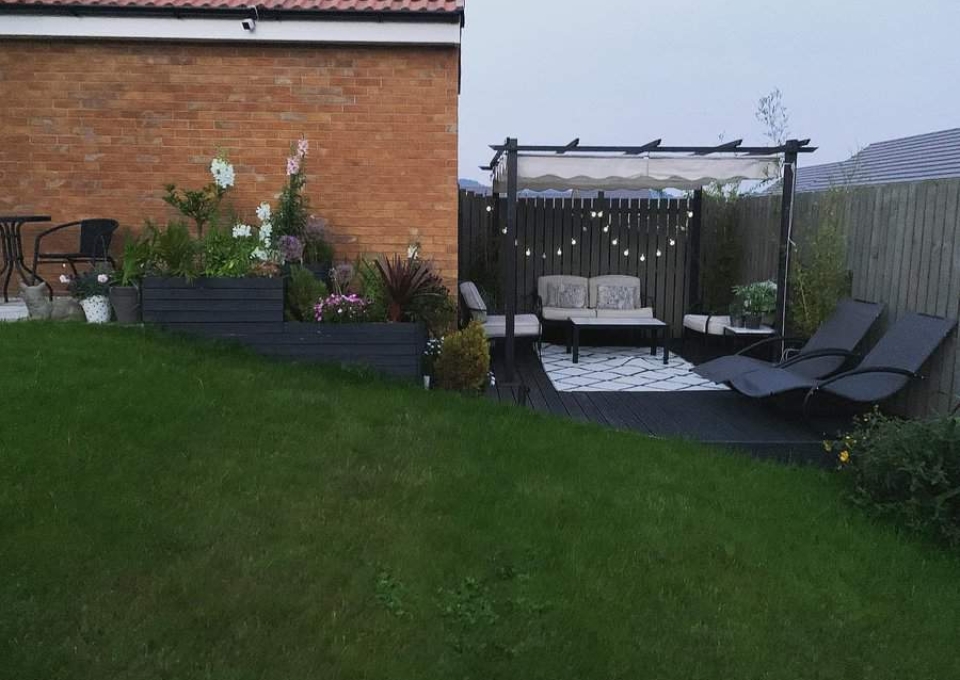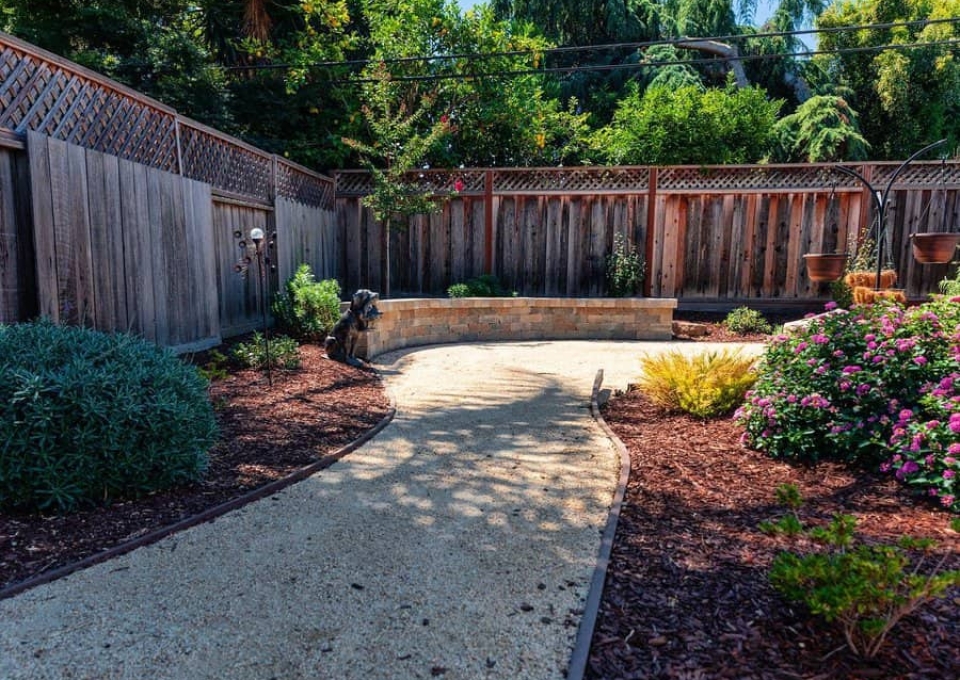Introduction to Landscaping for Beginners
Contents

What is Landscaping?
Landscaping is the practice of arranging or altering the features of a yard or garden. It includes planting trees and shrubs, as well as designing and installing hardscapes like paths and patios.
Benefits of DIY Landscaping
Empowerment and Creativity: Doing your own landscaping projects saves money and lets you add a personal touch, making your outdoor space uniquely yours.
Understanding the Basics Before You Start
Before you begin, it’s essential to grasp the basics: identify your soil type, sun exposure, and local climate. This information will help you choose the right plants and make informed design decisions, ensuring your garden is both attractive and sustainable.
Planning Your Landscaping Project

Setting Goals and Objectives
Start by picturing your perfect outdoor space. Whether you want a peaceful retreat or a lively area for gatherings, having clear goals will guide every choice, ensuring a unified and practical landscape.
Assessing Your Space
- Evaluate the dimensions, layout, and terrain of your garden. Identify areas with unique conditions like shade or poor drainage.
- Understanding these factors is essential for choosing plants and features that will thrive in your specific environment.
Choosing a Design Style
Consider your personal taste: do you favor the sleek lines of a modern landscape or the natural charm of a cottage garden? Your design choice will impact everything from plant selection to hardscape materials.
Tools and Materials Needed
- Essential tools include shovels, rakes, and pruners. For specialized tasks, you might need landscape fabric or stone pavers.
- Select durable, high-quality materials that match your design and withstand seasonal changes.
Preparation and Groundwork
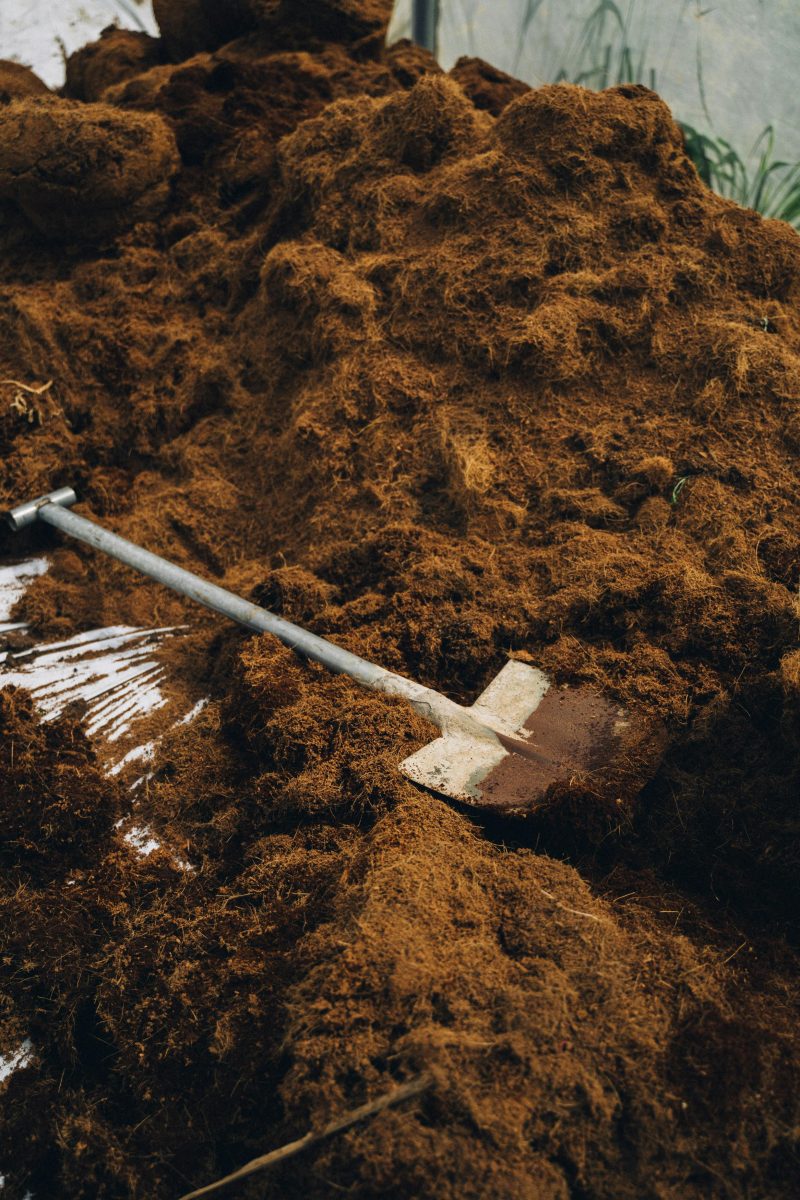
Clearing the Area
Start your landscaping project by clearing the area. Remove debris, weeds, and unwanted plants. This clean slate is essential for visualizing your design and ensuring nothing hinders the growth of new plantings.
Soil Preparation
Next, focus on the soil—a crucial foundation for any garden. Test the soil to determine its type and nutrient levels. Add compost or fertilizer as needed to create a fertile base that will support healthy plant growth.
Measuring and Layout Techniques
- Precise measurements are crucial for a well-balanced design. Use stakes and string for straight lines or a garden hose for curves.
- Plan the placement of plants and hardscape with both aesthetics and growth in mind, ensuring each element has enough space to thrive.
DIY Landscaping: Transform Your Outdoor Space
Unlock your garden’s potential with practical DIY landscaping. Begin with raised beds made from untreated lumber. Fill them with a mix of topsoil and compost to create a fertile environment for your plants.
Next, create pathways through your garden. Use stepping stones or reclaimed bricks to add structure and invite exploration.
For small spaces, think vertical. Use trellises, wall planters, or repurposed pallets to maximize your garden’s vertical space.
Incorporate sustainability by using recycled materials. Turn old tires into planters or use broken ceramics to create mosaic paths.
When choosing plants, aim for a cohesive look. Select a palette with textures and colors that provide year-round interest.
Transform Your Front Yard into a Welcoming Masterpiece
Think of your front yard as the introduction to your home. It sets the tone, inviting guests to experience your style and hospitality. A well-designed entryway with symmetrical plantings creates an elegant path leading visitors to your doorstep.
Enhance your outdoor space with a mix of perennials and annuals. Seasonal Splendor—marigolds that reflect the sun’s glow or pansies that add color during cooler months.
Add focal points like a tranquil water feature for serenity or an abstract sculpture for visual interest. Aim for balance by combining shrubs, small trees, and ornamental stones to create a cohesive look.
Garden Landscaping: Crafting Your Outdoor Sanctuary
Imagine your garden as a blank canvas, ready to be filled with greenery and blooms that will create your outdoor haven. Choosing the right plants is crucial; they should not only match your garden’s look but also thrive in its conditions. Opt for sun-loving plants like lavender and salvia for a cottage feel, or shade-tolerant plants such as hostas for a woodland area.
Themed gardens can transport you—consider an Asian-inspired garden with bamboo and maples, or a Mediterranean garden featuring olives and sage. Water features, from simple birdbaths to elaborate fountains, add both visual and auditory appeal to your space.
Pathways guide the journey through your garden. Whether you choose natural stone for a classic look or modern pavers for a contemporary feel, each path should be a deliberate part of the design.
Your garden is an extension of your home, where aesthetics meet functionality. With thoughtful planning and creativity, your garden can become a welcoming space of peace and beauty.

Lawn Landscaping: A Symphony of Greenery
Imagine a lush lawn greeting you each morning—a creation of your own efforts. Lawn landscaping goes beyond basic maintenance; it’s about cultivating a vibrant, living space. Choosing the right grass type for your climate ensures a healthy, green lawn.
But greenery is just the start. Pathways wind through, guiding the eye, while flower beds bloom with color, adding life and variety to your yard. These features are not just decorative; they invite you to explore a landscape rich in texture and vibrancy.
Our guide offers valuable insights to help you create not just a lawn, but a peaceful and joyful retreat. Embrace the beauty of greenery, and let us help you design your personal paradise.
Effortless Elegance: Low Maintenance Landscaping
Imagine a garden that thrives with minimal effort, a sanctuary reflecting nature’s simple beauty. Choose native plants that grow independently, conserving water and resisting pests. Consider succulents and ornamental grasses; they provide unique textures and withstand neglect.
Introduce hardscaping elements like pebbles and pavers. They create serene pathways and patios, reducing the need for constant lawn care. Design with purpose, using clean lines and sharp edges that are easy to maintain.
Use mulch to nurture your garden beds. This simple step retains moisture and prevents weeds, significantly reducing your workload. For a lasting touch of charm, incorporate focal points made from stone or metal. These elements age gracefully and require no upkeep.
With thoughtful design, your landscape can be both beautiful and practical—a true outdoor retreat.
Mulch Landscaping: A Symphony of Function and Beauty
Imagine your garden as a canvas, where mulch adds color, texture, and life. It’s not just practical; it creates a visual feast. Mulch landscaping combines lush greenery with design finesse, offering both form and function.
Organic mulches bring earthy tones, enriching the visual palette, while inorganic varieties add tactile diversity. They safeguard soil moisture, buffer against temperature extremes, and keep weeds at bay. Each mulch choice contributes to the garden’s visual harmony.
Think of mulch as the final touch that completes your outdoor space. It’s the detail that elevates a simple area to a sophisticated sanctuary.
Pathway Design: The Art of Leading the Way
Imagine a pathway that invites with every step, combining function with visual appeal. The choice of materials is essential. Natural stone offers durability and classic beauty, while brick provides a timeless, orderly look. Gravel adds a rustic touch and is soft underfoot, and concrete pavers offer modern simplicity.
Designs can be simple or complex. Patterns may guide with clean lines or feature intricate mosaics, each step contributing to a visual story.
As evening falls, pathway lighting ensures safe passage and creates an inviting atmosphere. Solar lights or low-voltage fixtures can subtly highlight the path’s edges, encouraging exploration.
Pathways should complement the landscape. Curved paths follow the natural contours of the land, blending with flower beds and green spaces. Straight walkways make a bold statement in formal gardens.
With careful planning, a pathway enhances the garden, making every outdoor experience more enjoyable.
Mastering Sloped Landscaping
Transform a sloping backyard into a layered garden. Terraced gardens create flat areas for plants and leisure. Retaining walls not only hold back soil but also shape elegant beds that follow the land’s contours.
Select deep-rooted shrubs and groundcovers to anchor the soil. These plants stabilize your slope while adding beauty. Design steps or pathways for easy navigation. They should wind through your garden, providing both access and visual interest.
A slope is an opportunity for a dynamic, tiered garden. Create an outdoor space that flat landscapes can’t match.
- Retaining Walls: Practical and a way to add texture and color.
- Plant Selection: Choose species that thrive on slopes for a lush, erosion-free garden.
- Pathways: Combine function with charm, using materials that complement the garden.
Enhancing Curb Appeal Through Landscaping
First impressions matter. Your front yard sets the tone for your home. Strategic landscaping boosts curb appeal, creating a welcoming visual impact. Choose plants that complement your home’s architecture and thrive in your local climate, ensuring year-round beauty.
Design with purpose. Add focal points like elegant planters at your entryway or soft lighting along pathways to guide visitors safely. A cohesive design blends aesthetics and functionality, with wide stone paths that lead guests to your door.
Landscaping is more than decoration; it’s a welcoming gesture from your home to all who approach.
.
In Closing
Transform your garden effortlessly with these beginner-friendly landscaping ideas. By using simple techniques and materials, you can create a space that reflects your personal style and enhances your home’s curb appeal. From selecting the right plants to designing pathways, each step offers a chance to innovate while ensuring sustainability and ease of maintenance. Let these insights inspire you to craft a garden that not only looks beautiful but also serves as a functional, serene outdoor retreat for years to come.

